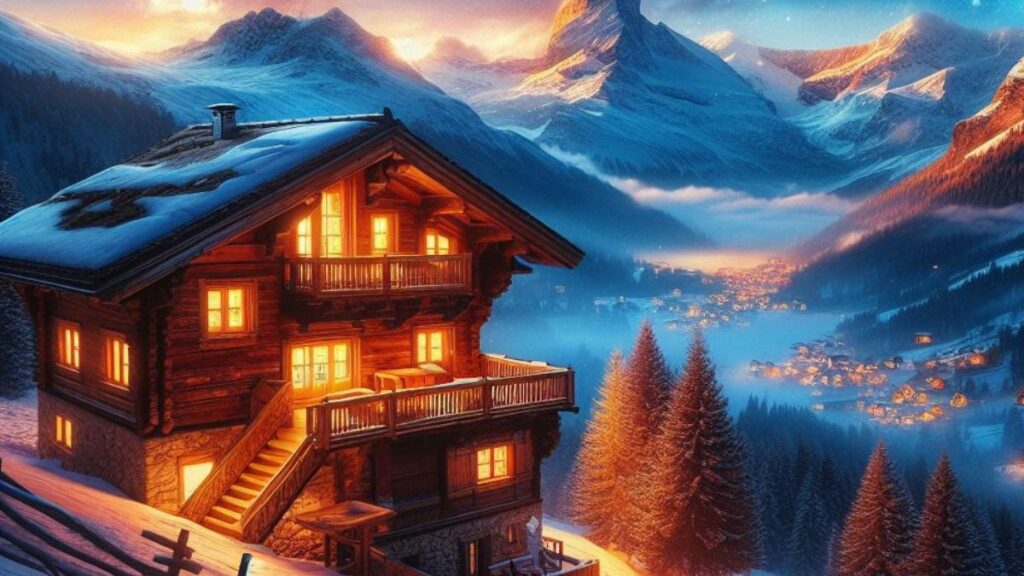What you need to know about Chaleturi?

Chaleturi, a term derived from the French “chalet” meaning cottage or house, encompasses a diverse range of meanings and contexts. From its traditional roots in Alpine architecture to its contemporary usage in various industries, understanding Chaleturi is key to appreciating its cultural, architectural, and commercial significance.
Exploring the Origins of Chaleturi
The origins of Chaleturi trace back to the Alpine regions of Europe, where these rustic structures were originally built as mountain retreats for shepherds and farmers. Over time, the concept of chalets evolved, blending traditional craftsmanship with modern amenities.
Chaleturi has since become synonymous with cozy getaways, offering a retreat from urban life amidst picturesque landscapes.
Evolution of Chaleturi Architecture
The evolution of Chaleturi architecture showcases a fusion of traditional design elements with contemporary innovations. Characterized by wooden facades, sloping roofs, and intricate carvings, Chaleturi architecture exudes rustic charm while providing comfort and functionality.
Significance in Tourism and Hospitality
In the tourism and hospitality industry, Chaleturi plays a pivotal role in offering unique accommodation experiences to travelers. Whether nestled in mountainous regions or overlooking serene lakes, these chalets provide a perfect blend of comfort and adventure for nature enthusiasts and leisure travelers alike.
Chaleturi in Modern Real Estate
The allure of Chaleturi extends beyond vacation retreats, with modern real estate developers embracing chalet-inspired designs in residential projects. From luxury mountain lodges to contemporary suburban homes, Chaleturi architecture adds a touch of elegance and warmth to urban landscapes.
Sustainability and Eco-Friendly Practices
With growing awareness of environmental conservation, Chaleturi construction is increasingly incorporating sustainable practices. From using locally sourced materials to implementing energy-efficient technologies, eco-friendly chalet designs aim to minimize environmental impact while maximizing comfort and aesthetics.
Cultural Influence and Traditions
Chaleturi is not just an architectural marvel but also a symbol of cultural heritage and traditions. From Switzerland to Canada, these structures reflect local craftsmanship and lifestyle, serving as cultural landmarks and gathering places for communities.
Chaleturi: A Haven for Winter Sports
For winter sports enthusiasts, Chaleturi are more than just accommodations; they are gateways to adventure. Located near ski resorts and snow-capped mountains, these cozy retreats provide a warm and welcoming ambiance after a day on the slopes.
Maintenance and Preservation
Preserving the authenticity and charm of Chaleturi requires regular maintenance and preservation efforts. From weatherproofing wooden exteriors to preserving historical chalets, maintaining these structures ensures their longevity for future generations to enjoy.

Iconic Chaleturi Around the World
From the iconic Swiss chalets of the Alps to the quaint log cabins of North America, Chaleturi comes in diverse shapes and sizes, each with its unique charm and history. Exploring these architectural wonders offers insights into different cultures and landscapes.
Incorporating Chaleturi Elements in Home Décor
For those inspired by the cozy ambiance of Chaleturi, incorporating elements of chalet-style décor in home interiors can evoke a sense of warmth and comfort. From rustic furniture to earthy color palettes, chalet-inspired décor creates a welcoming retreat within urban dwellings.
Frequently Asked Questions (FAQs)
What defines Chaleturi architecture?
Chaleturi architecture is characterized by wooden facades, sloping roofs, and intricate carvings, reflecting traditional Alpine design elements.
Are Chaleturi only found in mountainous regions?
While Chaleturi has historical roots in Alpine regions, modern interpretations can be found in various landscapes, including coastal areas and rural settings.
How can one experience staying in a Chaleturi?
Many Chaleturi establishments offer accommodations for travelers seeking a cozy retreat, providing amenities such as fireplaces, hot tubs, and scenic views.
What are some eco-friendly practices associated with Chaleturi construction?
Eco-friendly Chaleturi construction practices include using locally sourced materials, incorporating energy-efficient technologies, and implementing sustainable design principles.
What cultural significance does Chaleturi hold?
Chaleturi serves as symbols of cultural heritage and traditions, reflecting local craftsmanship and lifestyle in regions where they are prevalent.
What maintenance efforts are required to preserve Chaleturi?
Preserving Chaleturi involves regular maintenance, such as weatherproofing exteriors, repairing structural damage, and preserving historical chalets for future generations.
Conclusion:
In conclusion, Chaleturi encapsulates a rich tapestry of history, architecture, and cultural significance. Whether as vacation retreats, residential homes, or cultural landmarks, these charming structures continue to captivate and inspire people worldwide.




Leave a Comment